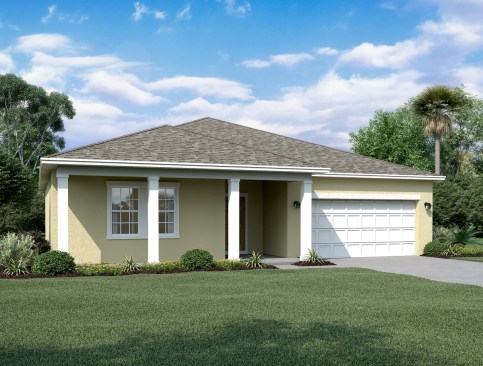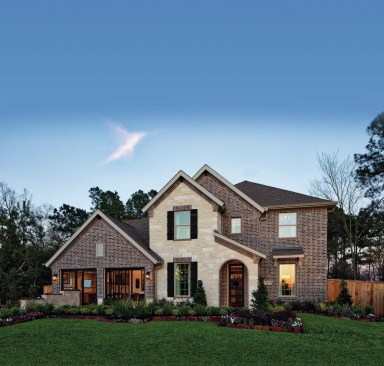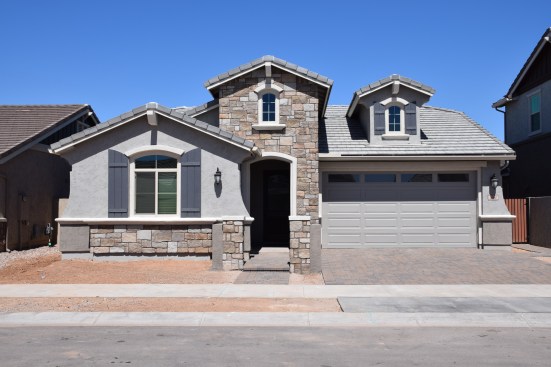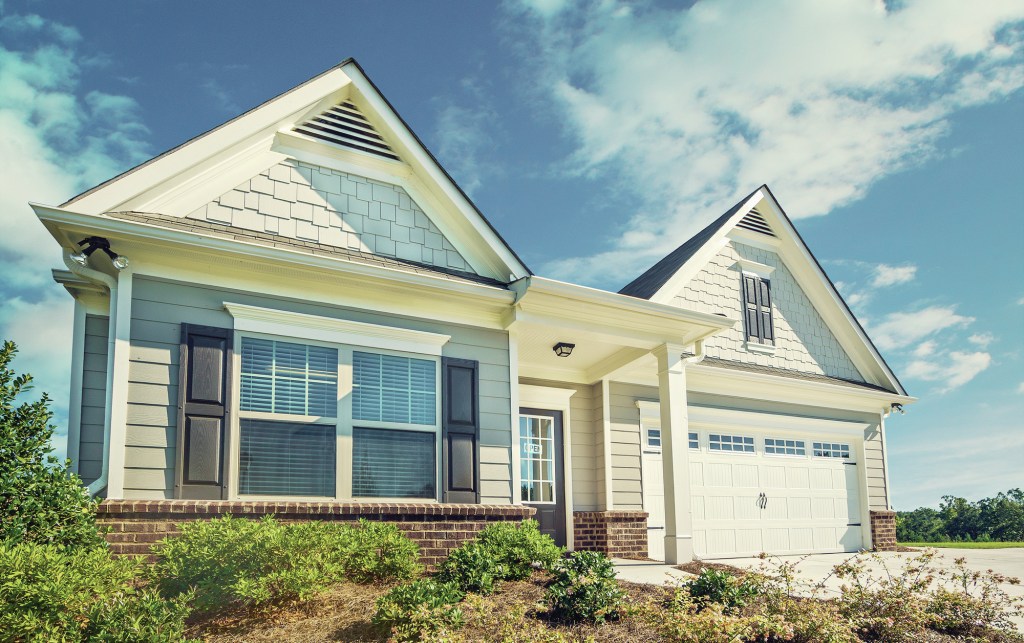Levitt & Sons pioneered the mass production of single-family homes in the wake of World War II and rode the resulting wave of speculative development for decades after. Then it went bust in the housing crash. It lived and died by the spec home, and it was not alone. After 10 years of post-crash restructuring, recapitalizing, and focusing on the move-up and luxury home segments, home builders have been cautiously moving back to spec-home building for the same reasons that drove Levitt in its early years: Demand, time, and money. In Levitt’s day, the demand came from GIs returning from the war to a nation in which nearly all home building ceased in order to divert materials and labor to the war effort. The time element was key to Levitt’s ability to deliver at a pace of 30 new homes a day at its peak. Mass production made that possible, and it also lowered the cost of Levitt’s homes to what the average GI and family could afford.
Substitute the word millennials for GIs above: This is now.
“There’s very strong demand for specs, but it’s not because people want a spec-finished home. It’s because they want an entry-level home,” says Alan Ratner, director of home building research at Zelman and Associates, noting that many of the companies that build at that price point make the numbers work by building spec.
Entry-level buyers are returning to the housing market, driven by job and income growth. First-time buyers accounted for 35% of home buyers in 2016, according to the National Association of Realtors (NAR)—a 10% jump from the previous year—while move-up buyers grew 3.5%. But baby boomers were also fighting for smaller, affordable homes with enough space for a college kid or an aging parent who needs extra support. According to the NAR’s 2017 Generational Trends report, 72% of buyers under 36 years old bought homes below $300,000, along with 67% of buyers aged 52 to 61, and 69% of those aged 62 to 70.
Time is critical in this sub-$300,000 price bracket, especially for first-time buyers who are nearing the end of a lease or first-time move-up buyers who don’t want to carry two mortgages. For builders to capture this market, they need to figure out how to quickly turn out an affordable product.
LGI Homes, which targets the entry-level market with a 100% inventory strategy and an average home price of $208,000, saw great success in 2016 with its quick-delivery homes. The Woodlands, Texas–based company, No. 15 on the Builder 100, saw a 22% increase in home closings last year, including an all-time high of 467 closings in December.
The year was so good that the sales rate got ahead of the pace of construction, and the builder’s strong 2016 finale segued into sales in January and February that were down 19% compared with a year prior. CEO Eric Lipar noted in LGI’s fourth-quarter earnings call that the company had 150 fewer homes under construction at the end of 2016 than 2015, which he believes is largely the reason why sales slipped. He didn’t have homes to sell because the appetite for spec homes was so high in 2016.
According to Zillow, inventory has been falling year over year nationwide every month for two years. Markets like Detroit and Grand Rapids, Mich., Fort Wayne, Ind., and Eugene, Ore., experienced more than a 25% decrease in housing stock last year, with all of them having less than 1% of their current housing stock for sale.
D.R. Horton—the largest builder in the U.S., closing 41,652 homes in 2016—read the writing on the wall three years ago when it launched its entry-level Express Homes line, priced from $120,000 to $150,000. The company pushed an aggressive growth strategy, and its chief operating officer, Michael Murray, now estimates 70% to 80% of the company’s sales are supported by spec homes. CEO David Auld acknowledges the importance of this strategy.
“If you look at the number of homes sold, 85% of them are resales, used homes, and another very important part of our sales equation is Realtors,” Auld says. “Outside Realtors are a huge part of our sales efforts, and our spec program keeps those relationships engaged and mutually benefiting.”
Optioning Out
For some builders, letting buyers choose a few specifications in their home is a primary selling point for new versus existing. However, many entry-level buyers can’t afford to spend the money on the upgrades or the time on the selection process.

Acknowledging that, Roswell, Ga.–based Ashton Woods, No. 22 on the Builder 100, introduced Starlight Homes in February. The 100%-inventory line will target buyers who want monthly mortgage payments from $800 to $1,200. The brand opened in three communities—two in Atlanta, and one in central Florida—and has since expanded to Austin and Phoenix. Ashton Woods expects to have Starlight Homes in all of its 12 markets by the end of 2017.
COO Ryan Lewis says Ashton Wood’s designers bring a high-end look to the more attainable Starlight Homes product. He notes customers are happier with the final product, even without the options.
For Toll Brothers’ T|Select line, however, options aren’t something the company (No. 10 on the Builder 100) is willing to give up. T|Select, which launched in the fall, isn’t entry-level, but it still aims to attract first-time buyers at the mid-$300,000 to mid-$400,000 range.
According to Kira Sterling, Toll’s chief marketing officer, T|Select offers a higher ratio of quick delivery homes (QDHs), the company’s term for spec-built homes, but if the spec is purchased during construction, customers can still select some features before completion. In comparison, LGI and Ashton Woods’ Starlight have no options, and sales usually occur toward the end of completion.

Targeting buyers at this price point early on provides the potential to serve these customers for a lifetime. “Presumably we could try to follow these people throughout the life cycle of their home needs and end up selling them an active adult home later on in life, and everything in between,” Sterling says.
Toll Brothers’ sales of both inventory and to-be-built homes has caused some customer confusion previously, where buyers or Realtors seem to believe a spec home should be cheaper than a made-to-order home because personalization options aren’t available. For Sterling, there’s a larger industry need to make consumers understand that a spec home isn’t less valuable—in fact, it could be more valuable if a buyer needs it immediately.
“We have to do a better job of explaining the value that this is not something that is leftover or undesirable,” she says. “It’s quite the opposite. The plans that are chosen for QDHs are among the most popular. You wouldn’t put a QDH in that wouldn’t be a killer seller.”
Labor Limits
The inventory strategy has worked well for these builders in part because of the labor opportunity. With today’s scarce labor resources, builders can promise contractors steady work. Many to-order builders would argue they have enough demand to keep their contractors on a steady pace, but entering a month with an unknown number of orders can be tricky.
“Trades in general like working with LGI or any builder that’s 100% spec, where there are not a lot of changes and every house tends to be similar,” Lipar explains.
Similarly, Auld notes an ongoing spec schedule gives trades a more even cash flow horizon, a valuable opportunity for more trades. “That predictability … allows them to stay loyal to the relationship,” he says.
The tight labor market has also made these quick-close homes more valuable. When it took only four months to build a home, the wait wasn’t that much of a turn-off, especially if it meant buyers could customize parts of their homes. Now, however, labor shortages can push that time horizon to seven months, turning away buyers in the process.
Taylor Morrison, No. 7 on this year’s Builder 100, primarily builds higher-end homes and doesn’t focus on spec. Alan Laing, executive vice president of operations at Taylor Morrison, suggests there could be an uptick in spec building at price points above entry-level just so builders can promise shorter completion times to buyers, if consumers are willing to give up a handful of selections.
“We’re losing two months of sales windows. It used to be you could sell homes up to August or September and get them finished by the end of the year. That’s now turned into June or July,” he says. “They may not be spec finishes, but I think you’re going to see more spec starts than we’ve seen in the past because it’s taking longer to do everything.”
For Tempe, Ariz.–based Fulton Homes, No. 82 on the Builder 100, spec building has always been roughly one-third of its sales. Dennis Webb, Fulton’s vice president of operations, says as a private company it’s easier to commit to inventory homes, while national builders largely can’t tie up their balance sheets.

Fulton Homes
The ability to compete with existing home inventory is a selling point for Fulton. The company can offer a firm date of occupancy for buyers who are concerned about selling their own home and then having to wait months before moving in. Like Taylor Morrison, Toll Brothers’ T|Select, and Ashton Woods’ primary product line, if spec homes are sold early enough, Fulton’s buyers still get the chance for some customization, while the company gets to schedule labor more efficiently.
“You can say to the vendors, ‘OK, I got these eight new builds and four spec right behind it,’ instead of just saying, ‘I have eight and I hope I sell another one next week,’” Webb says. “Trades want to know how many houses they’ve got coming and where they’re going to be.”
With that in mind, builders who keep the two-pronged approach have to manage the growth of inventory homes with the amount of to-order homes to which they commit. Built-to-order homes have higher margins, so builders can’t afford to put an order in the backlog in favor of a spec home with no buyer.
“You’ve got to be confident you can build the ones you’ve sold to customers in addition to the incremental ones you’re building in anticipation of a customer,” Laing says. “There’s a bit of yin and yang around overproducing or selectively producing for a customer that hasn’t written you a check yet versus the one that has.”
Risks and Rewards
Built-to-order homes are often favored by builders for those higher margins and were a large reason most stuck to move-up homes coming out of the recession, but the benefit for spec right now is the fast conversion cycle.
“Entry-level homes have lower margins because the buyers are adding fewer, if any, upgrades,” says Ratner of Zelman and Associates. “The way you hit your return threshold is a much stronger absorption sales pace, and the way you do that is you churn and burn through it by building spec and selling them as quickly as possible.” Selling homes later in the process has also helped builders manage costs better, as they can increase the price later if materials or labor costs eat into the budget.
As long as spec homes sell before construction is finished, the strategy is accretive to the business from a cash flow perspective, says Laing. While building spec homes can help builders get ahead of the market or offer more affordable product, companies can run into an overhead problem if forecasting is off. As LGI experienced earlier this year with not having enough homes to sell, the opposite problem is having too many homes under construction or finished when the market turns. “Returns in this industry are pressured enough without having finished inventory on our books and the related costs,” Laing says.
Home building is a cyclical business, and past decades have shown that a ramp up in completed spec is usually a sign of a pullback in the market, suggests Ratner. In 1981, when the economy experienced a slight recession following the energy crisis, builders saw completed spec sales jump to 44%. A similar trend followed in the Great Recession, when completed spec homes accounted for 51% of new home sales in 2008.
For now, market indicators show there’s not much to worry about: Demographics of first-time home buyers look strong and supply is still constrained.
“What I would watch for is a sense that price has sort of stagnated, and, in fact, we’re seeing the opposite,” says KBW analyst Jade Rahmani. “Home prices continue to rise and outperform expectations.”
Even so, many builders hesitate to get too far ahead of themselves. There’s still uncertainty in the market, even with a new administration that has promised pro-growth legislation. A slight dip in the economy or small increase in mortgage rates could cut out much of the demand that makes spec builders’ forecasted absorption paces pencil out. The upside is that profit margins today are sizable, with gross margin averages around 18%, according to Rahmani—meaning builders have some wiggle room before revenues will be impacted.
“People are excited about the anticipated future,” says Rahmani. “The risk is that it doesn’t play out as expected.”



